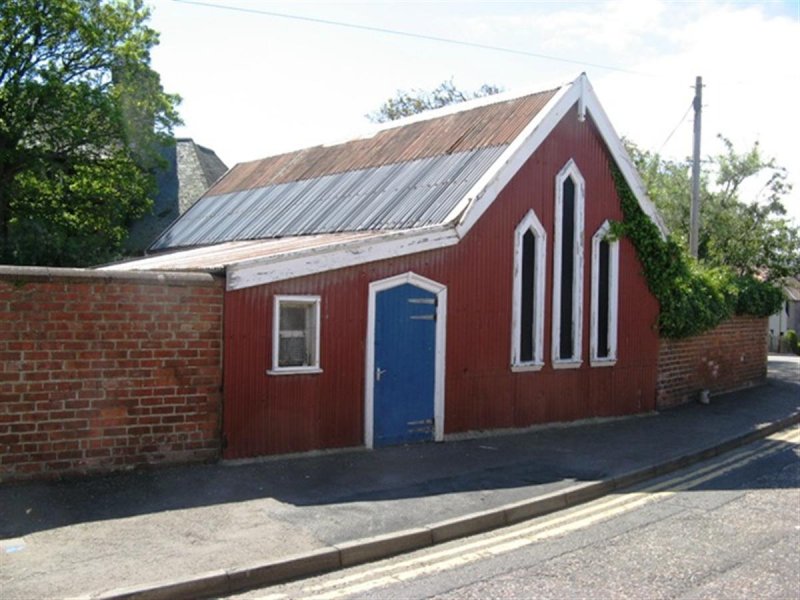There is seemingly little interest in much of the ephemeral built heritage of Dunbar, so I was naturally intrigued when someone alerted me to a conversation taking place around the Dunbar Tin Tabernacle, at the time I thought was one of the only relatively intact examples to survive in East Lothian. They wanted to make use of it as an informal arts facility but my guess was that it was worth a lot more as a building plot so even a cheap honest repair would be dismissed and any thought of a restoration declared “unviable”.
I was not privy to the detailed conversation at the recent Dunbar Community Council and was completely unaware of any of those that preceded it, but when I wrote in it elicited the following most interesting reply:
“The Rev R Douglas Bruce founded a boy Scout Troop in Dunbar in 1908 the year in which General Baden Powell published Scouting or Boys. Bruce was anxious to have a good rectory in Dunbar and in 19012/13 the Rectory was built. He was also anxious that there should be a good hall for church purposes but also for the Scout troop.
In the plan for the new rectory it was intended that a good hall would be built by the gate facing Lawson Place. In the meantime a temporary hall was bought, brought to Dunbar and built in The Rectory grounds and facing on to Westgate. The proposed new permanent hall was never built.
The temporary hall was surveyed in 1930 when it was thought it might last ten years or possibly thirty, if it was looked after well.
An extension was built and a kitchen and lavatory was included. It was not expected that it would last over a hundred years.
A former St Anne’s scout remembers using it and how much they enjoyed using it and how they stowed Scout gear in the space in the extension. It was used in my time c 1975 for Sunday School, Nursery School and Regular Whist evenings.
It was used in Paddy Allen’s time c 2000 for Worship when the church was being painted. Recently the congregation has made more use of the space in the church and use of the hall has declined.
St Anne’s congregation are engaged in an endeavour to make their buildings relevant to the needs of the 21st century and are developing the space in the church for wider community use. They considered that the hall had ended its useful life and wished to dispose of the site to allow them to concentrate on the church building.
Concerns were raised by Historic Scotland earlier in the year and the vestry was encouraged to make contact with specific conservation groups which it did and it found that these groups did not wish to pursue the matter nor despite considerable publicity were any other approaches made.
With no viable alternative in prospect, the vestry was granted permission to demolish the hall and granted planning permission to build a house on the site. They have now fenced off the site which is now on the market. Any interested party would now be expected to purchase the property at a price reflecting the fact that it has planning permission. It should also be noted that we understand that the Rectory has been sold on the understanding that there will be a site for a house on the site, so if there was a proposal for the hall to remain that might be a matter of concern.
It would also seem that considering the recent arts studio development in Westbarns School the building would in any case be too small for an arts hub.
Stephen Bunyan
Secretary to St Anne’s vestry”
Notes:
Conservation Area Consent for demolition of the building ref: 16/00040/P
Learn more about Tin Tabernacles from Ian Smith’s book: Tin Tabernacles: Corrugated Iron Mission Halls, Churches & Chapels of Britain Hardcover – 11 May 2004 or Nick Thompson’s: Corrugated Iron Buildings (Shire Library) Paperback – 10 Feb 2011
